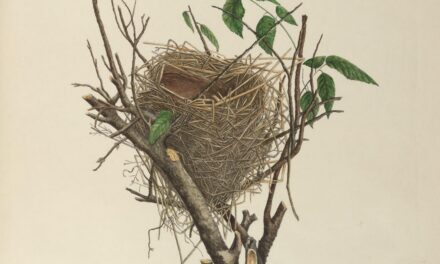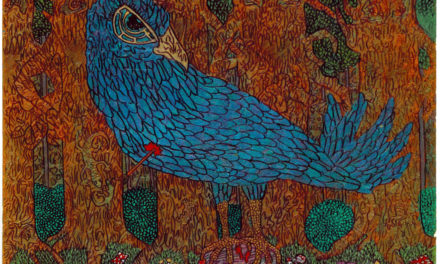Omnopolis
after Calvino
by Beston Barnett
Issue 6: Industry | 872 words

©Rymden
Omnopolis, city of flowers, city of lights—without a doubt, the single most colorful city in the world—began its long ascension with a simple garden.
Everyone knows the story: In a time of moderate prosperity, a city father of moderate vision proposed a large map in the center of town to be made of flowers, their different colors delineating different neighborhoods, the key tourist attractions, and a few main boulevards. No sooner was it planted than the discontents began clamoring against it. What if the shoemakers in the old quarter would rather be green than blue? When were the dockworkers consulted about having pink wharves? Why, by all that’s holy, was the Irish Quarter orange?
When it seemed as though the project would have to be dismantled—or at least pressed through committee after committee until it resembled ground beef—the fathers hit on a singular compromise: Let each citizen plant the flower of their choosing at the spot on the map corresponding to their home or work. Indeed, let it be their civic duty to participate in this most democratic of projects! Even the most divisive elements must be content with such a solution.
On the first day, the city lined up to make its many choices. Secretaries, waiters, salesmen, trash collectors—each waited with their little trowel, their clay pot, and their geraniums, orchids, blue bonnets, honeysuckles, or petunias. That day, unbeknownst to them all, famed Omnopolis was born, and the city from which it sprang began to fade.
This new Omnopolis was probably least visible to its founders, a group of unemployed drifters who, like old folk on park benches anywhere, began to wager over the outcome of the day. They bet on whether Banker’s Hill would remain mostly white. They bet on how much the total number of blue flowers would grow by next Wednesday. They bet on the severity of the violence that would erupt in the Irish Quarter over the few remaining patches of orange now in its sea of green. The betting pool grew into a regular happening, taking over the petanque field at the east corner of the park.
Because the map didn’t stop changing after those first few days.
The people of the city came to take a distinct pride in exercising their little aesthetic power. If a woman found love, she might change her gardenia for a rose; if a family member died, the survivors could plant a lily; if a man lost his job, he might raze his patch of dirt. Newcomers to the city loved to make their first choices, some to assimilate with the colors around them, others to pick some hue or exotic that reminded them of a place they had left behind.
The rest of the story is simply a matter of following the thing to its logical conclusion. Arguments among the bettors led to the placement of time-stamped cameras, high above the flower-map. The betting became more sophisticated. Some bet on color ratios over specific periods of time; others traded in month-long and year-long numbers for specific colors or specific arrangements. Because the cameras framed more than just the map, outlying areas were sometimes included in the betting as well, but it was argued that the owners of the off-map sections were given an unfair advantage. Soon, cameras covered the city. Every street corner, balloons in the air, even the sewers had cameras feed their color information into the central computers continuously. The ratios and their integrals fluctuating when the postal worker changed into her uniform, or when the coughing man pulled out his paisley handkerchief, or when the butcher’s smock was suddenly splattered with blood.
Billboards selling pure color sprang up from the rooftops. Friendships were made and broken over differences in hue. The hair dye industry boomed madly—just about every industry boomed actually. Investors flocked in. There was money to be made not only in the color biz, but also in its many related enterprises: computers, fashion, forecasting. And because the city’s color content was always growing and money was always pouring in, there seemed to be no ceiling to the possible prosperity.
You will want me to tell you now that the whole ridiculous financial edifice has finally come crashing down, or that the inhabitants have gone slowly horribly blind. I’d like nothing better than to oblige you. (Though I’d be lying. It shines bigger and brighter, like a bloated circus clown balloon towed above a ticker tape parade.)
I spent a couple of days in Omnopolis a year ago, bet on some colors for laughs, and lost my money. It was only a few dollars, but I hold my grudge to this day. I bet on the red of rose-lipped maidens and the pale white of the moon. These colors, once so innocent and mysterious, now seem petty. I see them on the street, and a mild annoyance or anger rises in me, like the feeling of seeing in a bookstore window a book I loved in childhood by an author for whom I later lost all respect.
The wise investor goes cautiously in Omnopolis. The city will sell your brightest memories like meat.

Beston Barnett
During the day, author Beston Barnett designs and builds furniture in San Diego. At night, he plays Romani jazz. The rest of the time, he writes quirky little stories in which he struggles—rarely successfully—to leave his characters living happily ever after. He is a graduate of the 2018 Clarion Workshop and has published stories with Clarkesworld, Gallery of Curiosities, and Metaphorosis.




